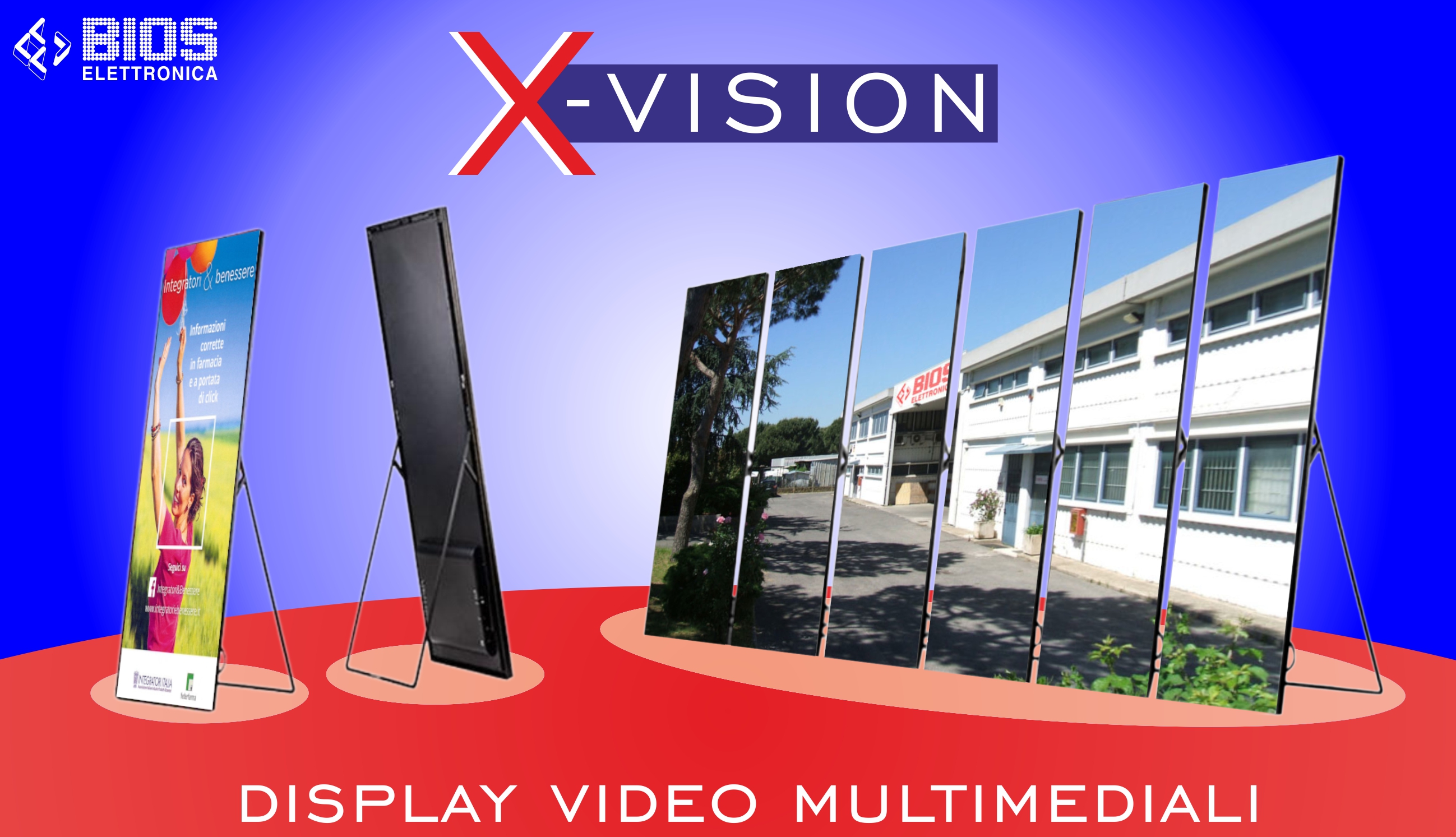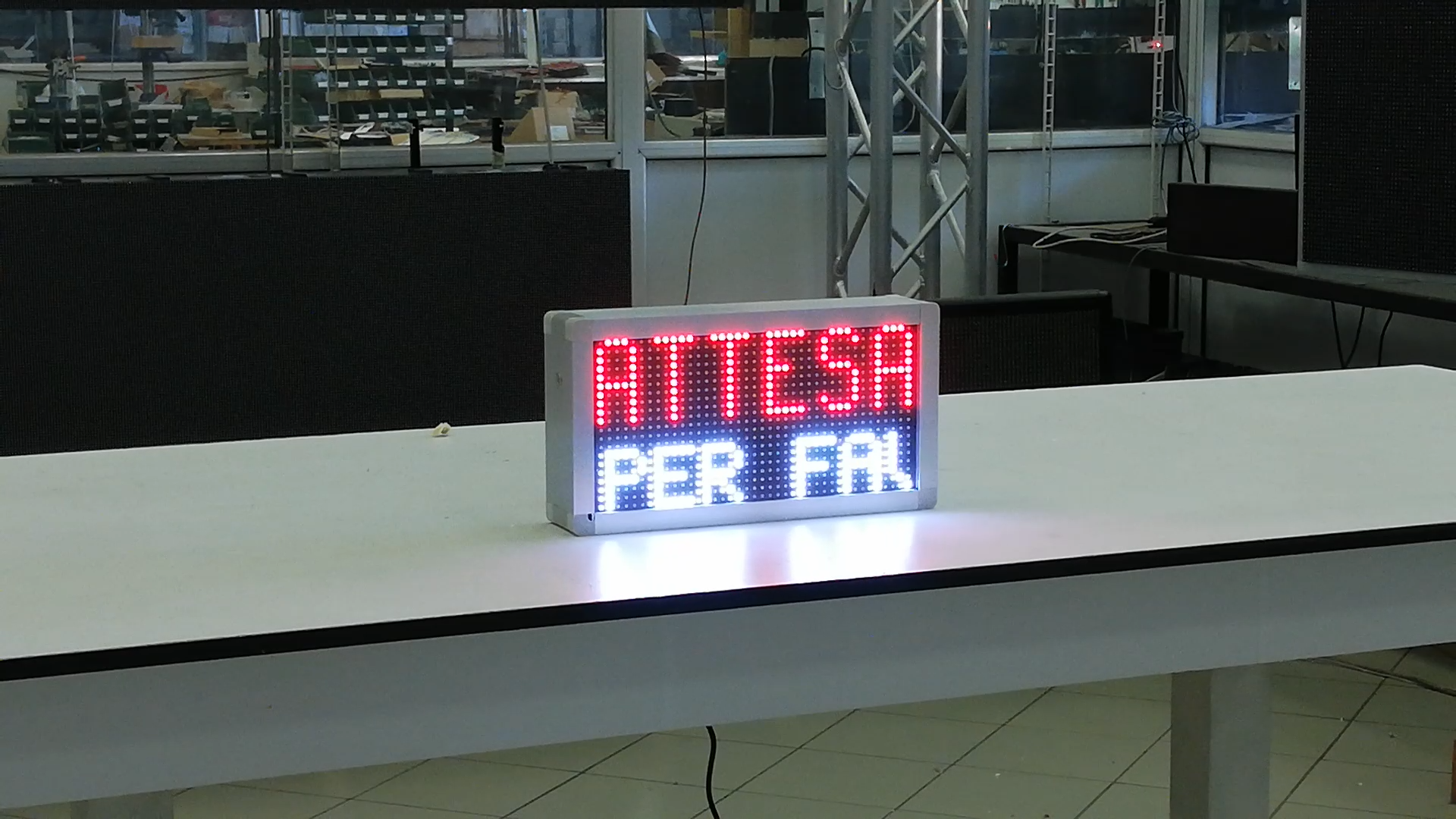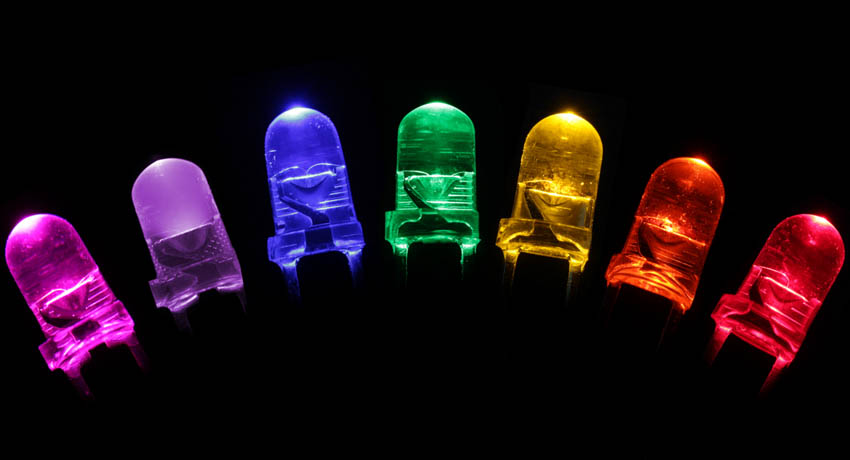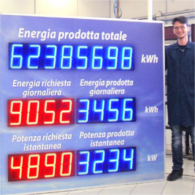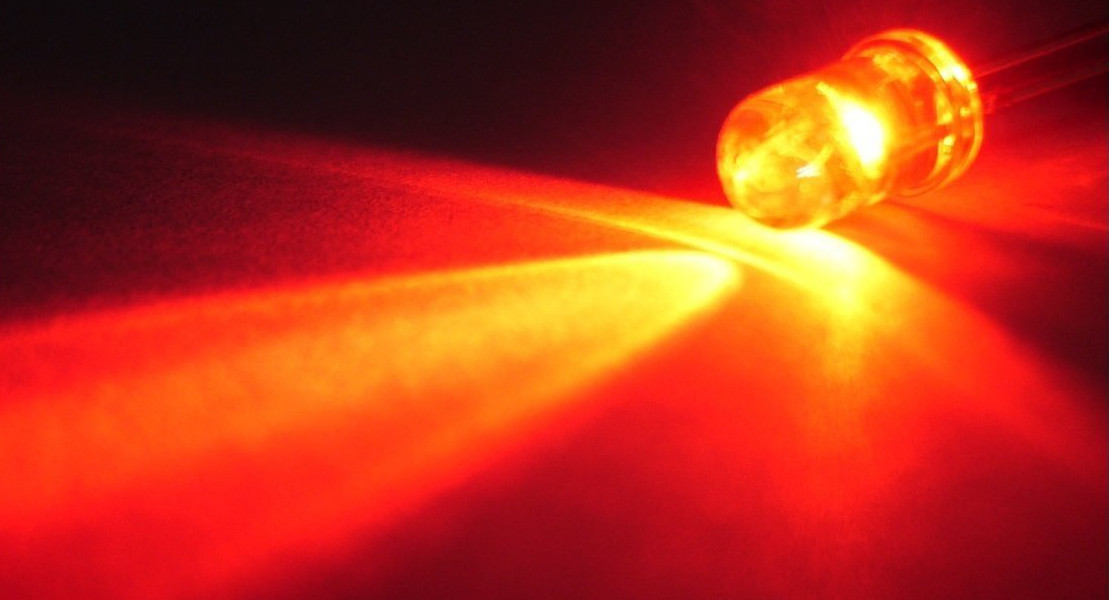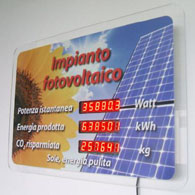What is a LED?
Light Emitting Diode (LED) is a semiconductor diode that emits light when an electric current is applied in the forward direction of the device, as in the simple LED circuit. The effect is a form of electroluminescence where incoherent and narrow-spectrum light is emitted from the p-n junction in a solid state material.
LEDs are widely used as indicator lights on electronic devices and increasingly in higher power applications such as flashlights and area lighting. An LED is usually a small area (less than 1 mm2) light source, often with optics added directly on top of the chip to shape its radiation pattern and assist in reflection. The color of the emitted light depends on the composition and condition of the semiconducting material used, and can be infrared, visible, or ultraviolet. Besides lighting, interesting applications include using UV-LEDs for sterilization of water and disinfection of devices, and as a grow light to enhance photosynthesis in plants.
His history
The first known report of a light-emitting solid-state diode was made in 1907 by the British experimenter H. J. Round of Marconi Labs when he noticed electroluminescence produced from a crystal of silicon carbide while using a cat's-whisker detector. Russian Oleg Vladimirovich Losev independently created the first LED in the mid 1920s; his research, though distributed in Russian, German and British scientific journals, was ignored, and no practical use was made of the discovery for several decades. Rubin Braunstein of the Radio Corporation of America reported on infrared emission from gallium arsenide (GaAs) and other semiconductor alloys in 1955. Braunstein observed infrared emission generated by simple diode structures using GaSb, GaAs, InP, and Ge-Si alloys at room temperature and at 77 kelvin.
In 1961, experimenters Bob Biard and Gary Pittman working at Texas Instruments, found that gallium arsenide gave off infrared radiation when electric current was applied. Biard and Pittman were able to establish the priority of their work and received the patent for the infrared light-emitting diode.
The first practical visible-spectrum (red) LED was developed in 1962 by Nick Holonyak Jr., while working at General Electric Company. He later moved to the University of Illinois at Urbana-Champaign. Holonyak is seen as the "father of the light-emitting diode". M. George Craford, a former graduate student of Holonyak's, invented the first yellow LED and 10x brighter red and red-orange LEDs in 1972. Up to 1968 visible and infrared LEDs were extremely costly, on the order of US $200 per unit, and so had little practical application. The Monsanto Corporation was the first organization to mass-produce visible LEDs, using gallium arsenide phosphide in 1968 to produce red LEDs suitable for indicators. Hewlett Packard (HP) introduced light-emitting diodes in 1968, initially using GaAsP material supplied by Monsanto. The technology proved to have major applications for alphanumeric displays and was integrated into HP’s early handheld calculators.
The first commercial LEDs were commonly used as replacements for incandescent indicators, and in seven-segment displays, first in expensive equipment such as laboratory and electronics test equipment, then later in such appliances as TVs, radios, telephones, calculators, and even watches (see list of signal applications). These red LEDs were bright enough only for use as indicators, as the light output was not enough to illuminate an area. Later, other colors became widely available and also appeared in appliances and equipment. As the LED materials technology became more advanced, the light output was increased, while maintaining the efficiency and the reliability to an acceptable level. The invention and development of the high power white light LED led to use for illumination (see list of illumination applications).
Advantages of LED
- Efficiency: LEDs produce more light per watt than incandescent bulbs; this is useful in battery powered or energy-saving devices.
- Colour: LEDs can emit light of an intended colour without the use of colour filters that traditional lighting methods require. This is more efficient and can lower initial costs.
- Size: LEDs can be very small (smaller than 2 mm2) and are easily populated onto printed circuit boards.
- On/Off time: LEDs light up very quickly. A typical red indicator LED will achieve full brightness in microseconds. LEDs used in communications devices can have even faster response times.
- Cycling: LEDs are ideal for use in applications that are subject to frequent on-off cycling, unlike fluorescent lamps that burn out more quickly when cycled frequently, or HID lamps that require a long time before restarting.
- Dimming: LEDs can very easily be dimmed either by Pulse-width modulation or lowering the forward current.
- Cool light: In contrast to most light sources, LEDs radiate very little heat in the form of IR that can cause damage to sensitive objects or fabrics. Wasted energy is dispersed as heat through the base of the LED.
- Slow failure: LEDs mostly fail by dimming over time, rather than the abrupt burn-out of incandescent bulbs.
- Lifetime: LEDs can have a relatively long useful life. One report estimates 35,000 to 50,000 hours of useful life, though time to complete failure may be longer. Fluorescent tubes typically are rated at about 10,000 to 15,000 hours, depending partly on the conditions of use, and incandescent light bulbs at 1,000–2,000 hours.
- Shock resistance: LEDs, being solid state components, are difficult to damage with external shock, unlike fluorescent and incandescent bulbs which are fragile.
- Focus: The solid package of the LED can be designed to focus its light. Incandescent and fluorescent sources often require an external reflector to collect light and direct it in a usable manner.
- Toxicity: LEDs do not contain mercury, unlike fluorescent lamps.
Disadvantages of LED
- High price: LEDs are currently more expensive, price per lumen, on an initial capital cost basis, than most conventional lighting technologies. The additional expense partially stems from the relatively low lumen output and the drive circuitry and power supplies needed. However, when considering the total cost of ownership (including energy and maintenance costs), LEDs far surpass incandescent or halogen sources and begin to threaten compact fluorescent lamps.
- Temperature dependence: LED performance largely depends on the ambient temperature of the operating environment. Over-driving the LED in high ambient temperatures may result in overheating of the LED package, eventually leading to device failure. Adequate heat-sinking is required to maintain long life. This is especially important when considering automotive, medical, and military applications where the device must operate over a large range of temperatures, and is required to have a low failure rate.
- Voltage sensitivity: LEDs must be supplied with the voltage above the threshold and a current below the rating. This can involve series resistors or current-regulated power supplies.
- Light quality: Most cool-white LEDs have spectra that differ significantly from a black body radiator like the sun or an incandescent light. The spike at 460 nm and dip at 500 nm can cause the color of objects to be perceived differently under cool-white LED illumination than sunlight or incandescent sources, due to metamerism, red surfaces being rendered particularly badly by typical phosphor based cool-white LEDs. However, the color rendering properties of common fluorescent lamps are often inferior to what is now available in state-of-art white LEDs.
- Area light source: LEDs do not approximate a “point source” of light, but rather a lambertian distribution. So LEDs are difficult to use in applications requiring a spherical light field. LEDs are not capable of providing divergence below a few degrees. This is contrasted with lasers, which can produce beams with divergences of 0.2 degrees or less.
- Blue Hazard: There is increasing concern that blue LEDs and cool-white LEDs are now capable of exceeding safe limits of the so-called blue-light hazard as defined in eye safety specifications such as ANSI/IESNA RP-27.1-05: Recommended Practice for Photobiological Safety for Lamp and Lamp Systems.
- Blue pollution: Because cool-white LEDs (i.e., LEDs with high color temperature) emit much more blue light than conventional outdoor light sources such as high-pressure sodium lamps, the strong wavelength dependence of Rayleigh scattering means that cool-white LEDs can cause more light pollution than other light sources. It is therefore very important that cool-white LEDs are fully shielded when used outdoors. Compared to low-pressure sodium lamps, which emit at 589.3 nm, the 460 nm emission spike of cool-white and blue LEDs is scattered about 2.7 times more by the Earth's atmosphere. Cool-white LEDs should not be used for outdoor lighting near astronomical observatories.
Applications
The many application of LEDs are very diverse but fall into three major categories: Visual signal application where the light goes more or less directly from the LED to the human eye, to convey a message or meaning. Illumination where LED light is reflected from object to give visual response of these objects. Finally LEDs are also used to generate light for measuring and interacting with processes that do not involve the human visual system.
INDICATORS AND SIGNS
- Status indicators on a variety of equipment
- LED displays used as stadium television displays, electronic billboards and dynamic decorative displays.
- Traffic lights and signals
- Exit signs
- Thin, lightweight message displays at airports and railway stations, and as destination displays for trains, buses, trams, and ferries.
- Red or yellow LEDs are used in indicator and alphanumeric displays in environments where night vision must be retained: aircraft cockpits, submarine and ship bridges, astronomy observatories, and in the field, e.g. night time animal watching and military field use.
- LEDs of all colors, including yellowish white to simulate incandescent lamps, are used for model railroading applications
- In dot matrix arrangements for displaying messages.
- Because of their long life and fast switching times, LEDs have been used for automotive high-mounted brake lights and truck and bus brake lights and turn signals for some time, but many high-end vehicles are now starting to use LEDs for their entire rear light clusters. Besides the gain in reliability, this has styling advantages because LEDs are capable of forming much thinner lights than incandescent lamps with parabolic reflectors. The significant improvement in the time taken to light up (perhaps 0.5s faster than an incandescent bulb) improves safety by giving drivers more time to react. It has been reported that at normal highway speeds this equals one car length increased reaction time for the car behind. White LED headlamps are beginning to make an appearance.
- As a medium quality voltage reference in electronic circuits. The forward voltage drop (e.g., about 1.7 V for a normal red LED) can be used instead of a Zener diode in low-voltage regulators. Although LED forward voltage is much more current-dependent than a good Zener, Zener diodes are not available below voltages of about 3 V.
- Glowlights, as a more expensive but longer lasting and reusable alternative to glowsticks.
- Lumalive, a photonic textile
- Emergency vehicle lighting
- LED-based Christmas lights available in different colors and with low energy consumption.
- LED-modules provide LEDs in a more usable form to people with less knowledge of electronics and soldering: the actual LEDs are contained within in protective and mountable casing, and a lead enables connection to power supply, typically 12 volts. LED modules are available in a wide range of shapes, sizes and colors.
LIGHTING
- Replacement light bulbs
- Flashlights with low energy usage and high durability
- Lanterns
- Street lights
- Large-scale video displays
- Architectural lighting
- Light source for machine vision systems, requiring bright, focused, homogeneous and possibly strobed illumination.
- Automotive lighting on cars, motorcycles
- bicycle lights
- Backlighting for LCD televisions and lightweight laptop displays. Using RGB LEDs increase the color gamut by as much as 45%.
- Light source for DLP projectors
- Stage lights using banks of RGB LEDs to easily change color and decrease heating from traditional stage lighting.
- Medical lighting where IR-radiation and high temperatures are unwanted.
- Strobe lights or camera flashes that operate at a safe, low voltage, as opposed to the 250+ volts commonly found in xenon flashlamp-based lighting. This is particularly applicable to cameras on mobile phones, where space is at a premium and bulky voltage-increasing circuitry is undesirable.
- Invisible infrared illumination for night vision, such as many security cameras.
- A ring of LEDs around a video camera, aimed forward into a retroreflective background, will allow for chroma keying in video productions.
SMART LIGHTING
Light can be used to transmit broadband data, which is already implemented in IrDA standards using infrared LEDs. Because LEDs can cycle on and off millions of times per second, they can, in effect, become wireless routers for data transport. Lasers can also be modulated in this manner.
NON-VISUAL APPLICATIONS
- Grow lights using LEDs to increase photosynthesis in plants
- Remote controls, such as for TVs and VCRs, often use infrared LEDs.
- Movement sensors, for example in optical computer mice. The Nintendo Wii's sensor bar uses infrared LEDs.
- As light sensors
- In optical fiber and Free Space Optics communications.
- In pulse oximeters for measuring oxygen saturation
- LED phototherapy for acne using blue or red LEDs has been proven to significantly reduce acne over a three-month period.
- Some flatbed scanners use arrays of RGB LEDs rather than the typical cold-cathode fluorescent lamp as the light source. Having independent control of three illuminated colors allows the scanner to calibrate itself for more accurate color balance, and there is no need for warm-up. Furthermore, its sensors only need be monochromatic, since at any one point in time the page being scanned is only lit by a single color of light.
- As UV curing devices for some ink and coating applications.
- Sterilization of water and other substances using UV light.
- Touch sensing: Since LEDs can also be used as photodiodes, they can be used for both photo emission and detection. This could be used in for example a touch-sensing screen that register reflected light from a finger or stylus.
- Opto-isolators use an LED combined with a photodiode or phototransistor to provide a signal path with electrical isolation between two circuits. This is especially useful in medical equipment where the signals from a low voltage sensor circuit (usually battery powered) in contact with a living organism must be electrically isolated from any possible electrical failure in a recording or monitoring device operating at potentially dangerous voltages. An optoisolator also allows information to be transferred between circuits not sharing a common ground potential.


